Fest Content: 35 videos by 30 presenters
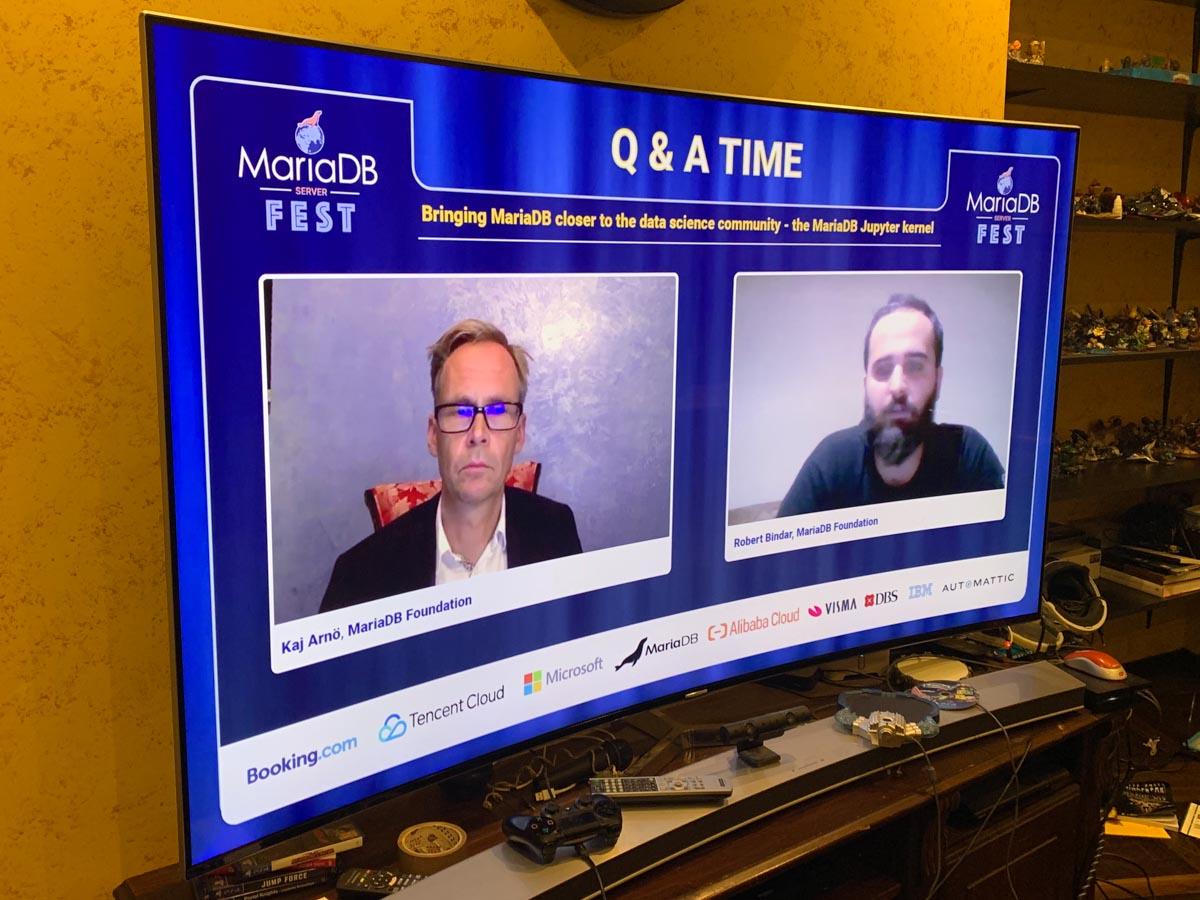
So you heard about the interesting presentations at the MariaDB Server Fest, but didn’t have time to watch them when we were live? Or you have so far seen only a couple of the presentations, but would like some hints at which other presentations are worthy of taking a look at?
That’s the purpose of this blog entry: to help you pick and choose, suggesting what could be interesting for you. All the Server Fest presentations are available on YouTube, with subtitles and Q&A sessions!
Four tips
A first tip: Most presentations have a short five-minute Q&A session. Look at that first, if you are unsure of investing time into the whole presentation (usually about 25 minutes).
A second tip: Approach the talks by category (http://mariadb.org/fest2020/sessions/), and use the schedule (https://mariadb.org/fest2020/schedule/) as a navigational help only if you happen to remember eg. “it was the second session on Tuesday”.
A third tip: Check out the overall experiences from the MariaDB Server Fest at https://mariadb.org/fest-conclusions/.
A fourth tip: Take a look at the Zulip chat session from each of the talks. The individual chats are linked from each talk page, which is what I’m mentioning in my overview below.
Use Cases: How do other users think?
The first category of presentations were user stories. How do users use MariaDB Server? What are their experiences and thoughts?
The first presentation in this category was by Supermetrics, perhaps the hottest tech startup in Finland currently. They are all about analysing metrics on web related marketing activities, which of course generates quite a lot of data. What do they think about data persistence? How do they choose a database? When do they pick NoSQL, when Key Value, when relational? And why do they prefer a cloud variety of MariaDB Server, in the form of SkySQL? Clearly, do not miss Duleepa Wijayawardhana’s and Viktor Djupsjöbacka’s Supermetrics and the many bears: a modern day fable on the search for the perfect database.
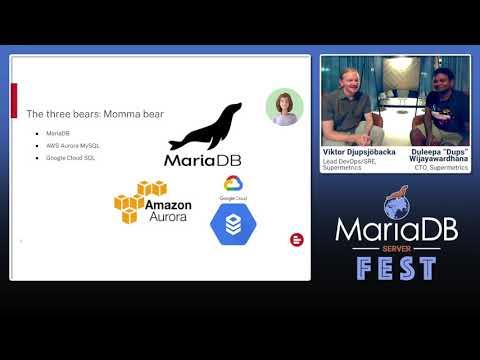
Another great user story is Sasha Vaniachine’s Building a relational data lake with MariaDB ColumnStore. We did not have a feature level intro to ColumnStore, the flagship feature in MariaDB Server 10.5, but what can be better than a user story?
Migration Talks
Migration is a common denominator throughout the Fest. In the yellow use case category, do take a look at Lixun Peng’s user story on Migrating from Oracle to MariaDB. Lixun is a MariaDB veteran and works for both MariaDB Foundation and Woqutech in China.
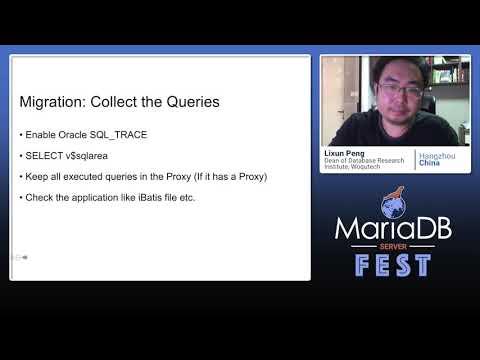
A top migration presentation is Sveta Smirnova’s How to migrate from MySQL to MariaDB without tears. Also in the same category we have Shiv Iyer’s Migration tales, mainly from the financial industry.
Cloud Talks
Cloud usage is another common denominator, quite like migration. Where Supermetrics explained why they are interested in SkySQL, Robert Hedgpeth of MariaDB Corporation gives you an intro to MariaDB SkySQL: next generation DBaaS from the source. In the cloud category, you’ll also find Tera Zhu’s intro How to help financial customers use Tencent Cloud MariaDB and Microsoft partner Ram Sajja’s presentation on IT Operations on Azure MariaDB.
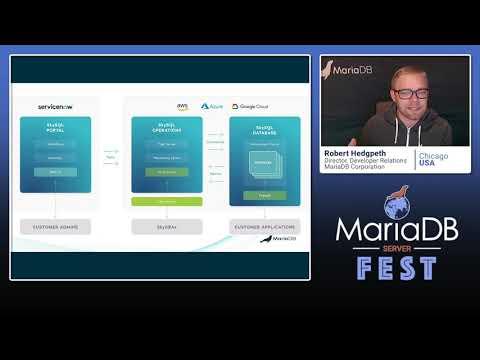
Functionality, old and new
We wanted to shed light on MariaDB Server functionality from a multitude of directions. MariaDB Foundation board member Sergei Golubchik gave an overview of 10.5 and beyond.
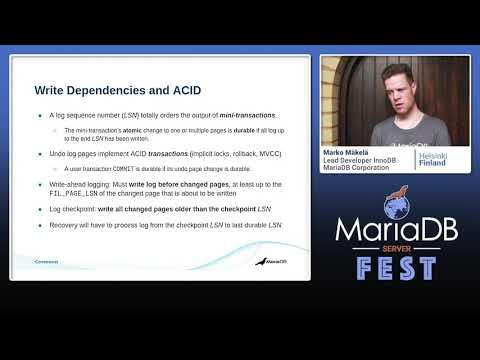
On the MariaDB Unconferences (the face-to-face meetings we’ve usually arranged twice a year), people flock around Marko Mäkelä who here presented on Scalability improvements in MariaDB’s InnoDB storage engine.
Peter Zaitsev of Percona did a comparison of MySQL 8 vs MariaDB 10.5. Sveta Smirnova provided another overview, of the improvements in the latest MariaDB versions.
Seppo Jaakola described both old and new functionality, first in his overall MariaDB Galera Cluster presentation, then in Galera Clustering in MariaDB 10.5 and beyond.
Federico Razzoli gave a great overview of Temporal tables, explaining the difference between system level tables (for eg. auditing) and application level tables (for added logic functionality).
Richard Bensley came with great and funny war stories on various MariaDB functionality in sql_mode=ludicrous.
Robert Bindar described the newest possible functionality, just freshly released on GitHub: Bringing MariaDB closer to the data science community – the MariaDB Jupyter kernel.
Troubleshooting and optimising
Some of the deepest technical presentations were highly valuable, more distilled versions of presentations happening earlier. One of the coolest presentations on all of the Fest was Valerii Kravchuk’s Dynamic tracing of MariaDB Server on Linux – problems and solutions. Highly technical, quite demanding but even more rewarding. Valerii’s MariaDB 10.5 new features for troubleshooting is also to be recommended.
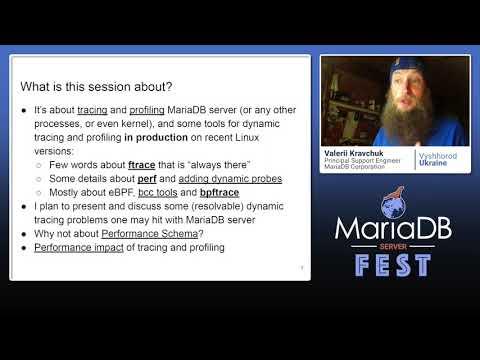
Sergei Petrunia is known for his optimiser deep dives. He had two presentations: ANALYZE for statements: MariaDB’s hidden gem and Optimizer Trace walkthrough. Check them out.
Storage Engines
MariaDB Server is open, and underlines its core value of openness by cultivating the Storage Engine architecture. The CONNECT storage engine was mentioned by two other talks (those by Jorge Torre and Richard Hensley); the complete overview was given by Federico Razzoli in Playing with the CONNECT storage engine.
Vicențiu Ciorbaru spoke about Long-term archival with MariaDB’s S3 storage engine, the first time a deep presentation was given by somebody other than S3 core author Michael “Monty” Widenius. The S3 engine was also compared by Seth Shelnutt in MyTile: a cloud-native storage engine based on TileDB – one of the talks that got the most interactions on Zulip.
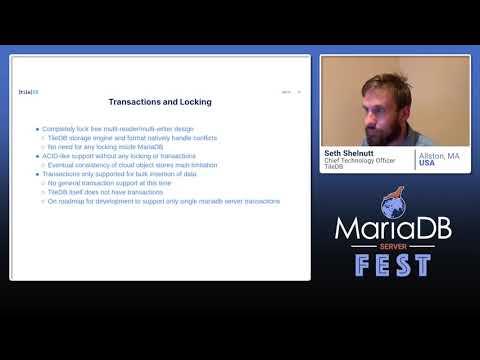
Although the implementation is not exactly a storage engine, I’ll conclude this group with the Jorge Torres talk on AutoML in MariaDB: train and query machine learning models straight from MariaDB. A great presentation on the deep integration between a machine learning module and MariaDB. Have a look.
Hardware
You get more out of MariaDB Server if it’s properly integrated into hardware. Tong Zhang spoke about SSD integration in MariaDB meets solid-state computational storage drives: higher performance at lower cost. Krunal Bauskar spoke about MariaDB on ARM, also one of the talks providing most engagement on Zulip. And Li Xinlong spoke about CDB & CynosDB with hardware and software integrated design.
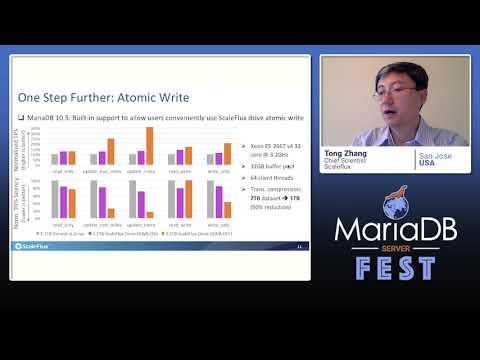
Hot stuff from China
Szechuan serves spicy food, and a few Chinese presenters served quite hot and technically deep stuff in the Beijing sessions. While all sessions were in English all across the planet, some were not broadcast in Paris or New York. Luckily, they’re recorded, for you to catch up on now. Harvesting the Chinese gold nuggets should be facilitated by our decision to subtitle every single video, whether Chinese or not.
Some of the hot Chinese talks have been mentioned under other headers, such as Lixun’s presentation under Migration, Tencent’s presentation under Cloud, and the CynosDB integration under Hardware.
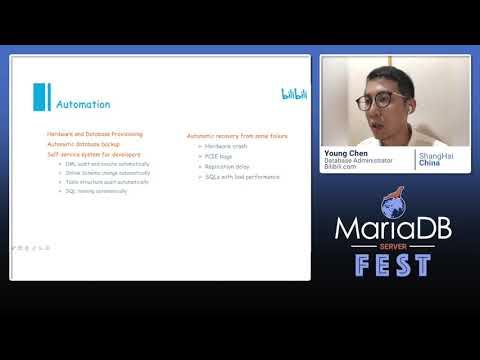
Two presenters were from Woqutech (think DBaaS): Pengfei Ma who spoke about MariaDB database clusters on Kubernetes, and Pickup Li speaking about Avoiding replication delays. Quite an interesting “yellow” user case talk was by Young Chen of MariaDB at BiliBili.com, the company who live streamed our videos in China (and now hosts the individual presentation videos).
Community
To conclude the list of talks, I picked one of my favourite topics: Community. This is about how MariaDB Server works with the community, and how MariaDB Foundation works with the community.
The first talk in this category is Oleksandr “Sanja” Byelkin’s How to get your bug fixed fast. A very self descriptive header. How should a bug be described, so that it’s as easy as possible to fix for the developer? You can see the years of experience (and some frustration) that have flown into this presentation.
Daniel Black, recently joining MariaDB Foundation from IBM, gave an overview of how MariaDB Foundation thinks about innovation in It’s all about you: innovation that matters. Eric Herman, Chairman of MariaDB Foundation, presented Comparing ecosystems: MariaDB and Public Code, based on his deep experience from both ecosystems.
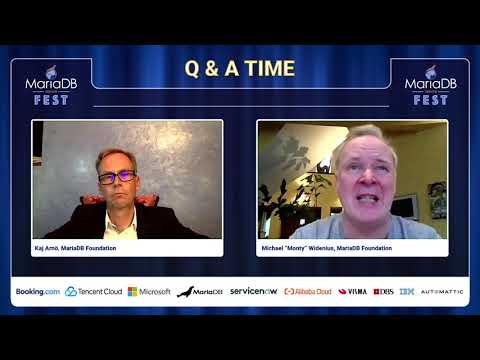
And last but not least, there is the Ask Me Anything session with MariaDB founder Michael “Monty” Widenius. In AMA with Monty, I had the joy of conveying the many audience questions to Monty, on all topics – business and technology, personal and public, past and future.
Hope this overview will help you benefit from last month’s MariaDB Server Fest 2020 for a long time to come!